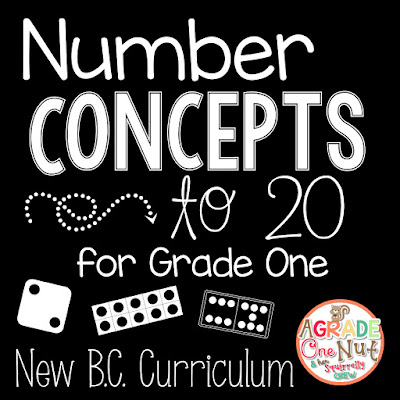Recently, my journey exploring the new B.C. Curriculum has led me to the Grade 1 math curriculum. The curriculum content objective, ways to make 10, lists benchmarks of 10 and 20 as a required concept to understand. A quick perusal of google produced very little for teaching about benchmarks to six and seven year olds. I did however find some good places to start!
The first was a teaching blog, What I Have Learned, by teacher Jessica Boschen. Jessica does a great job explaining strategies that develop 10 as a benchmark number. While the strategies were wonderful, I knew my students were not there yet. I needed something a little simpler. Then I found a great video by Bethany McClurkan called 10 Benchmark on a Numberline:
After watching this, I thought I knew what I wanted to teach my students. I wrote my lesson plan, delivered it to my students and they were LOST!! I mean LOST. They clearly were not ready for this level of benchmark complexity. A few maybe understood but the majority were lost and asking when it was lunch time - haha. I scrapped that lesson quickly.
I thought to myself, I need to simplify this. I know what the objective is eventually: they need to add and subtract using the benchmarks. First, what do I want my students to be able to do? 1) I want them to be able to identify the benchmarks of 10 and 20 and to be able to label them on a number line. So I told my students we were going to learn some more about benchmarks. I gave them the definition: "A benchmark is a number that is used all the time in math. It is common and easy to deal with. You can use it to solve math equations." I asked them if they could guess what numbers I was talking about. The first number they said was '0'. I thought to myself, of course 0 is a benchmark, so we labeled it on a large number line I posted on the SmartBoard. Eventually, my students named 10 and 20. Then, we labeled 5 and 15, because, why not - they are important, too. I told my students that these numbers were all important benchmarks.
Next, I handed out a blank number line without increments.
Together we labeled 0 at the beginning of the line on the left. Then, we labeled 20 on the right. Next, I demonstrated how to fold my numberline in half like a hamburger to label 10, because we know that 10 is half of 20. Then, we folded 0 to meet 10 and thus, labeled 5. Finally, we folded 20 to meet 10 and labeled 15. In my excitement, I said, "OK, let's now label the rest of the number line now that we have the benchmarks!" DISASTER! Well, not a complete disaster but somehow in all of my years of experience, I forgot 6 and 7 year olds' fine motor and spatial abilities are not fully developed yet. I stopped them halfway through and had them crumple the number line up for the recycle bin - they LOVED that - haha.
The next day, I reviewed the benchmarks with my students on a large number line, this time with increments, on the SmartBoard. Then, I had students come up and label the numbers in between the benchmarks.
As a game, I gave my students a number line with increments, the benchmarks of 0, 10 and 20, and squares to write the numbers between the benchmarks.
In partners, they were to take turns choosing a number on the numberline and having their partner try to guess that number. If the partner guessed the correct number they could write it on their number line. The partner at the end of the lesson with the most numbers written on their timeline was the winner. They LOVED this! As a less time-consuming, but still valuable version, I encouraged groups to give clues to their partner. For example, one might say, "I am thinking of a number between the benchmarks of 5 and 10," or "I am thinking of a number that is less than the 20 benchmark and more than the 15 benchmark." As a result, my students were solidifying their ability to identify the benchmarks, where they were located on the numberline and, Objective #2: to know where the other numbers were located, and how they were positioned on the numberline, in relation to the benchmarks. This game took them some time and no one completely finished, so I made a few other options that had some of the numbers filled in - in this way we could work up to filling in the entire number line.
You may even want to give the option to choose one of the three number lines when playing the game. I recently attended a Shelley Moore workshop. These could easily be turned into a Tier 1, Tier 2 and Tier 3 number line option.
If you are interested in this lesson on teaching numeracy benchmarks of 10 and 20 to 6 and 7 year olds you can get this lesson with printables along with 7 more, as well as a bonus 100th Day of School Scavenger Hunt lesson and formative and summative assessments, by clicking below. Topics include decomposing 10, the equal and not equal sign, addition to 10, subtraction to 10, and an exploration of a First Peoples' powwow song, story involving making 10 and methods of counting.
The above unit is my second unit in my Grade One math series based on the New B.C. Curriculum. If you are looking for the first unit, click below!
I don't know about you but I have never been a math person. However, I am loving my understanding of math as I learn more about it. Wish I had known all of these things when I was younger! Happy teaching!












